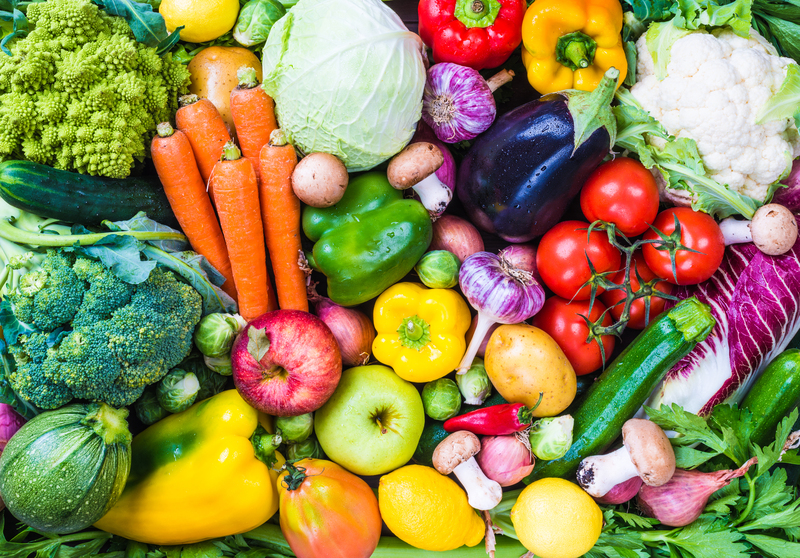Rooted in Action: How Gardening Fosters Climate Change Resistance
Posted on 30/08/2025
Rooted in Action: How Gardening Fosters Climate Change Resistance
In an era of escalating climate disruptions, the need for resilient communities and sustainable living practices has become more pressing than ever. One of the most impactful yet accessible methods to build climate change resistance comes from an age-old practice: gardening. Whether through a backyard vegetable patch, community gardens, or urban greening projects, gardening offers a suite of benefits that empower individuals and communities to confront the challenges of a changing climate. In this comprehensive article, we delve deep into how gardening fosters climate change resistance, offering practical insights, scientific backing, and actionable strategies for a greener future.
Understanding Climate Change Resistance
Before exploring gardening's role in climate resistance, it's important to grasp what "climate change resistance" truly means. Resistance -- in environmental terms -- is the ability to withstand, adapt, and even thrive in the face of climate stressors such as extreme weather, increased temperatures, water scarcity, and diminished biodiversity.
Climate change resistance encompasses both mitigation (reducing the causes of climate change) and adaptation (adjusting to its impacts). Gardening, as we'll uncover, can serve both functions when approached thoughtfully and on a wide-enough scale.

The Power of Gardening as a Climate Change Solution
Gardening is more than a hobby or a source of fresh produce--it's a powerful, grassroots solution to climate challenges. Through its ecological, social, and psychological benefits, gardening supports community resilience, improves our environment, and provides practical tools to slow down climate change.
Gardening to Sequester Carbon and Improve Air Quality
- Carbon Sequestration: Plants--by the very nature of photosynthesis--absorb carbon dioxide from the atmosphere and release oxygen. Well-maintained gardens sequester significant quantities of carbon, reducing greenhouse gas concentrations.
- Urban Green Spaces: In cities, rooftop gardens, vertical gardens, and parks absorb pollutants, cool the air, and lower the urban heat island effect.
- Soil Health: Rich, organic soils store more carbon. Sustainable gardening techniques (mulching, composting, avoiding chemical fertilizers) enhance this process even further.
Reducing Food Miles and Promoting Local Production
- Shorter Supply Chains: Growing your own food, or sourcing it from community gardens, drastically cuts the distance food travels from farm to plate--reducing fossil fuel consumption and associated emissions.
- Fresh, Nutritious Produce: Local gardening increases access to chemical-free, nutritious foods while supporting health and reducing packaging waste.
Promoting Biodiversity and Ecosystem Resilience
- Wildlife Habitat: Gardens can be havens for pollinators (bees, butterflies), birds, and beneficial insects, supporting ecological networks under threat from monocultures and urbanization.
- Native Plants: Planting indigenous species creates resilient ecosystems less prone to pest outbreaks and less reliant on artificial irrigation or fertilizers.
- Diverse Planting: Encouraging crop diversity buffers gardens against pests, diseases, and weather extremes--increasing their ability to withstand climate shocks.
Gardening as Climate Adaptation: Practical Approaches
While gardening mitigates climate change, it also offers practical solutions for adapting to new environmental realities. By employing climatically appropriate gardening methods, individuals and communities can thrive even as weather patterns shift.
Water-Wise Gardening
- Rainwater Harvesting: Capturing rainwater for irrigation reduces dependency on mains supply and relieves pressure during drought periods.
- Drip Irrigation: Direct-to-root watering minimizes evaporation and water waste.
- Mulching: Organic mulches (bark, leaves, straw) lock in soil moisture, regulate temperature, and suppress weeds.
- Drought-Tolerant Species: Integrating hardy plants and xeriscaping reduces garden water needs.
Soil Regeneration for Increased Resilience
- Composting: Transforming food scraps and yard waste into compost recycles nutrients, improves soil structure, and increases fertility.
- Cover Crops: Green manures and cover crops fix nitrogen, prevent erosion, and build organic matter--creating robust soils that can withstand extreme weather.
- Permanent Ground Cover: Keeping soil continually covered with plants or mulch prevents desiccation and erosion from heavy rain or wind.
Urban Gardening: Transforming City Spaces
- Community Gardens: Shared spaces foster social bonds, enhance food security, and convert vacant lots into productive green areas.
- Rooftop and Vertical Gardens: Utilizing under-used urban spaces for greenery not only absorbs carbon but also insulates buildings, reducing energy costs.
- Edible Landscapes: Incorporating fruit trees, berries, and edible herbs into public landscaping increases climate resilience and food access simultaneously.
The Social Dimensions of Gardening and Climate Change Resilience
Gardening's climate benefits extend beyond its environmental impact. Community-based gardening enhances social cohesion, builds local knowledge, and empowers citizens--all contributing to climate change resistance.
Fostering Community Engagement and Education
- Knowledge Sharing: Gardening circles, workshops, and collaborative projects pass down knowledge about sustainable practices, native species, and climate-resilient techniques.
- Resilience Networks: Strong social ties between gardeners create networks of mutual aid during climatic disruptions (e.g., sharing resources during heatwaves or droughts).
- Awareness and Advocacy: Grassroots gardening initiatives often drive wider sustainability practices, influencing local policy and inspiring broader environmental action.
Mental Health and Well-being
- Stress Relief: Gardening is proven to reduce stress, anxiety, and depression--mental health challenges that can increase as climate impacts intensify.
- Physical Activity: Regular gardening promotes fitness, mobility, and general well-being, supporting individual resilience.
- Sense of Agency: Taking positive, tangible action in the garden counteracts feelings of helplessness in the face of global climate issues.
Innovative Ideas for Greener, More Resilient Gardens
With climate patterns shifting, gardeners must look to inventive solutions for creating robust landscapes. Here are some cutting-edge concepts gaining popularity in climate-smart gardening:
- Polyculture Planting: Growing multiple species in proximity mimics natural systems, reducing pest outbreaks and diseases while maximizing yields.
- Perennial Crops: Deep-rooted perennials store more carbon and withstand harsh conditions better than annuals.
- Regenerative Agriculture: Embracing holistic, nature-based strategies in larger gardens or urban farms--for example, no-till cultivation and integrated pest management.
- Rain Gardens: Planting shallow depressions with moisture-loving species captures rainfall, reduces runoff, and filters pollutants.
- Green Roofs & Walls: Technologies that turn built environments into living, breathing ecosystems.
Barriers to Climate-Resilient Gardening (And How to Overcome Them)
While the benefits of gardening for climate resilience are clear, significant challenges remain. Addressing these barriers ensures that everyone can participate in this crucial movement.
Access to Land
- Urban land is often in short supply. Solutions include communal gardening plots, school gardens, or micro-gardening on balconies and windowsills.
Resource Constraints
- Seeds, tools, and soil amendments can be costly. Seed-saving initiatives, tool libraries, and municipal composting can reduce barriers for beginners.
Education
- Many lack gardening experience. Expanding city programs, demonstration sites, and online resources can empower more people to start or join gardens.
Policy and Support
- Some neighborhoods face bylaws restricting front-yard food gardens or tree planting. Advocacy and local government partnerships are essential for enabling systemic change.
Global Case Studies: Gardens Making a Difference
Detroit, USA
Once a symbol of decline, Detroit now leads the way in urban agriculture. Hundreds of vacant lots have been transformed into gardens and micro-farms that not only produce food, but also remediate soil, lower urban temperatures, and provide education and employment. This grassroots approach has become a cornerstone of climate change resistance in an urban context.
Havanna, Cuba
When import supplies crashed, Havana's residents adapted by turning empty spaces into organic gardens known as "organoponicos." These not only provide food and local jobs but are models of closed-loop, low-input gardening that's inherently climate resilient.
Melbourne, Australia
Increasing heatwaves and droughts prompted Melbourne to create a network of public gardens, urban forests, and cooling green corridors to lower temperatures and enhance urban resilience--a blueprint for other cities worldwide.

How You Can Foster Climate Change Resistance Through Gardening
Wondering how to start your journey towards a climate-resilient garden? Here are actionable tips:
- Start Small: Even windowsill pots or container gardens can make a difference. Grow herbs, salad greens, or pollinator-friendly flowers.
- Select Local & Native Species: Work with nature, reducing resource needs and supporting biodiversity.
- Improve Soil Health: Compost, mulch, and grow cover crops whenever possible.
- Minimize Chemicals: Embrace organic and integrated pest management practices for cleaner air, water, and food.
- Practice Water Stewardship: Collect rainwater, avoid runoff, and prioritize water-wise crops and methods.
- Build Community: Share resources and knowledge, participate in local garden projects, or advocate for more green space.
Conclusion: A Movement Rooted in Action
Gardening isn't just about growing plants--it's about growing climate resilience, community strength, and hope for the future. Each seed sown, each yard turned to productive use, and every pollinator-friendly flower planted adds up to a profound impact on our environment and our capacity to adapt. As we embrace gardening as part of our toolkit for climate change resistance, we empower not just ourselves, but generations to come, in the fight for a sustainable, thriving planet.
If you're searching for a simple yet profound way to make a difference in the era of climate change, get involved, get your hands dirty, and become rooted in action--for the benefit of our planet, our communities, and ourselves.

